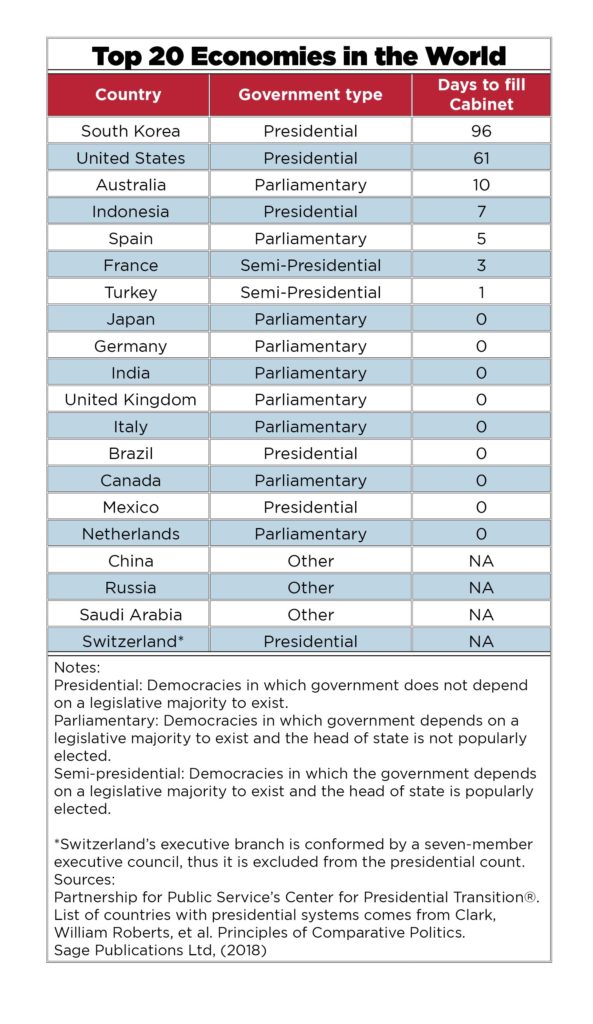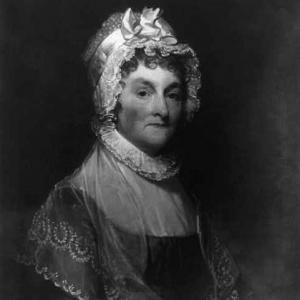Part
01
of two
Part
01
How does the US president choose their cabinet?
Key Takeaways
- The president nominates 15 individuals to head the 15 executive departments, and this is the advisory body that makes up the Cabinet, including the vice president. When the president names a Cabinet member, the nomination is presented to the Senate in writing, referred to the committee that has dominion over the position for hearings, followed by Senate floor considerations of the nomination. The final approval/rejection has to come from the Senate through a simple majority vote.
- To be eligible, one cannot be a Congress member, and cannot serve in the legislative and executive branches concurrently (cannot hold another elected office).
- Qualified potential Cabinet ministers have experienced roles such as university and college presidency and being government officials. As administrators, they have more responsibility than authority and know how to handle ambiguity and competing constituencies. Those that have worked in public institutions have dealt with legislative bodies.
Introduction
This research has provided an overview of how the president chooses their Cabinet with details like the official requirements/restrictions, considered qualifications and traits, and other relevant information.
A High-Level Description of the Process
- The president nominates 15 individuals to head the 15 executive departments, and this is the advisory body that makes up the Cabinet, including the Vice President.
- When the president names a Cabinet member, the nomination is presented to the Senate in writing, referred to the committee that has dominion over the position for hearings, followed by Senate floor considerations of the nomination.
- The final approval/rejection has to come from the Senate through a simple majority vote.
Official Requirements/Restrictions for Potential Cabinet Members
- One cannot be a Congress member and cannot be a member of the president's family. Furthermore, no one can serve in the legislative and executive branches concurrently (cannot hold another elected office like the governor's office).
- Additionally, each candidate has to pass a thorough FBI check.
- The only other obstacle is the mandatory Senate confirmation. However, it is usually a formality, as the president's choices are rarely questioned.
- It is worth noting that there are no restrictions related to age or birthplace. However, members born outside the U.S. or younger than 35 are removed from the presidential line of succession.
Qualifications and Traits that are Considered when Choosing the Cabinet
- Qualified potential Cabinet ministers have worked in roles such as university and college presidency and being government officials.
- As administrators, they have more responsibility than authority and know how to handle ambiguity and differing parties.
- Those who have worked in public institutions and have dealt with legislative bodies.
- Business experience is also at times used as a qualifying factor, whereby executives who have had substantial community participation, such as by being a school chair or have led a company with government regulation, are seen as good potential candidates.
- People that have already been good Cabinet officials in the past are also seen as potential members since they have the required skills for running large government departments.
- When choosing Cabinet members, presidents also consider diversity and political criteria. For instance, they need to make a decision if they want to consider candidates from the opposition party.
Other Relevant Information
- Among the countries with the highest GDP, the U.S. is among the slowest to confirm Cabinet members.
- The length of the confirmation process has varied in the past years. For President Biden's Cabinet, the Senate took 61 days to confirm the members.
- For Donald Trump and Barack Obama, all the Cabinet secretaries were confirmed in 97 and 98 days respectively.
- George Bush's Cabinet was confirmed in 12 days, while Bill Clinton's was confirmed in 50 days.
- Filling the Cabinet is usually top on the agenda of a president-elect since it is crucial for the new administration to start running. This avoids national security gaps, which makes personnel decisions and policy implementation lag behind.
- Most Cabinet nominations have been quickly confirmed by the Senate with little to no debate. However, partisan and political conflicts between the senators and presidents have, in some instances, led to fights over the nominees, leading to their rejection. Specifically, nine nominations have been rejected by the Senate to date.
- It is more common for approached potential candidates to decline. According to Brookings, "Almost everyone you ask to serve is making a lot more money than the $191,300 salary a cabinet officer gets. Yet you will usually get the people you want for the “inner cabinet”—State, Treasury, Defense, and Justice. Beyond that, it can be difficult: President Reagan was turned down by six of his first choices—five for “outer cabinet” jobs."
Research Strategy
For this research on the U.S. Cabinet, we relied on the most credible sources of information that were publicly available, such as the White House website.
In some instances, slightly dated sources were used to add robustness and/or corroboration to the findings, considering the highly specific nature of the topic and the limited availability of more recent reputable sources.


